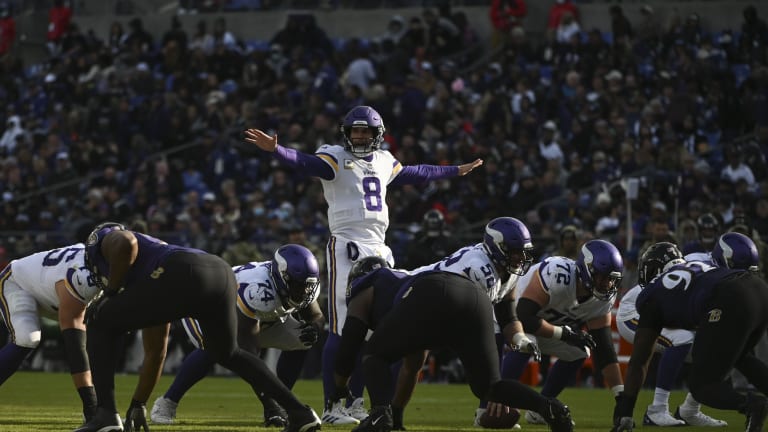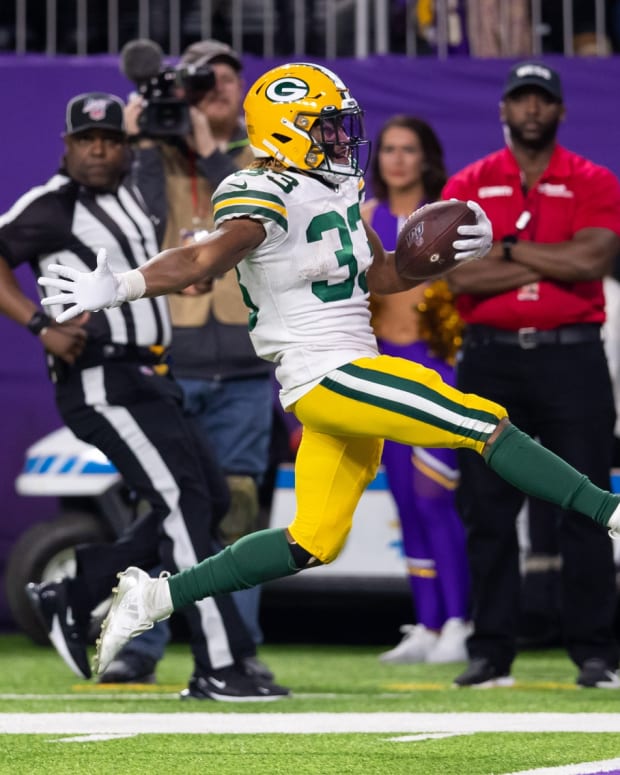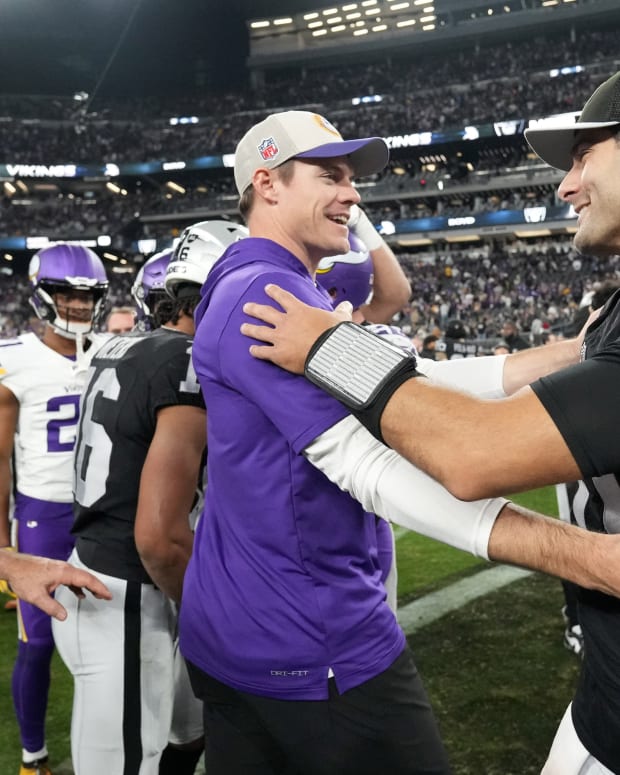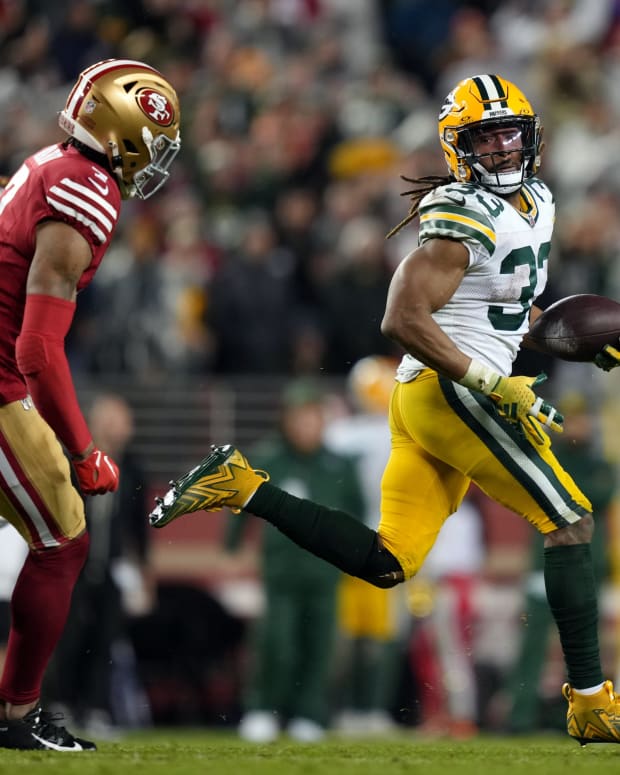
Everything we learned about Kirk Cousins from PFF's QB Annual

Every year following the Super Bowl, Pro Football Focus releases its “QB Annual,” which contains detailed analytical breakdowns of all the starting quarterbacks around the league. The numbers, which are cross checked by former NFL quarterback Bruce Gradkowski, shed more light on QB play than traditional stats like yardage, touchdowns and interceptions by including performance under specific circumstances and by displaying the strengths and weaknesses of the quarterbacks.
What do they say about Kirk Cousins? Let’s have a look…
The gap between pressure vs. clean pocket performance
As has been the case throughout his career, Kirk Cousins was excellent when given time to throw the football. He graded by PFF as the No. 1 clean-pocket passer and produced a 116.7 quarterback rating (second best). And Cousins wasn’t just hitting wide open receivers when given time to throw. He ranked sixth in big-time throw percentage when clean and ranked seventh in average depth of target.
The natural question is whether better offensive line play would provide more clean pockets and result in more consistent performances but that doesn’t quite hold up. Certainly it would help but Cousins’ overall pressure percentage ranked 15th. The difference between the 15th and 24th most pressured is only 3%. Pressure happens, even against good O-lines.
His numbers when pressured, by the way, were much the opposite of his clean-pocket play. Cousins ranked 17th in PFF grade and averaged just 5.1 yards per attempt when under pressure, which is a full yard below league average.
Cousins’ stats under pressure are connected to other stats, like avoiding sacks. The Vikings’ quarterback was vastly improved in avoiding sacks this season as his percentage of pressured drop backs resulting in sacks dropped to 13.6%, which is 5% below league average (in a good way). However, he was 19th in average depth of target when pressured. He finished 26th in big-time throw percentage when pressured.
So you can paint the picture that while Cousins reduced severely negative sacks better than in years past, he extremely conservative with the ball in those situations and did not create anything out of his sack avoidance.
How does that compare to other QBs? Buffalo’s Josh Allen managed a big-time throw at nearly three-times the rate of Cousins when under pressure (9.1% vs. 3.6%). Cousins ran only five times when pressured, which was 21 times fewer than the league leader and the fifth least in the NFL and his 5.1 YPA was third lowest in the league. The leaders in pressured YPA: Joe Burrow (8.6) and Matthew Stafford (8.0).
Checkdowns, reads and scrambles
One of the things the PFF Annual captures in its data is how a quarterback performs when things are on and off schedule.
Below is a league-wide chart depicting how quarterbacks produced in terms of Expected Points Added when they were asked to throw to their first read versus their second read, a scramble or a checkdown. As you can see, Cousins dominated on his first read but put up similar numbers to Tua Tagovailoa, Daniel Jones and Ben Roethlisberger when he was required to do anything else.
Luckily for Cousins, 68% of his passes came on the first read and only 23% were on a second read, scramble or checkdown. To put the exact numbers on it, his EPA/play was 0.26 on first reads, which is way above the league average of 0.07 but his EPA/play combined in the other three scenarios added up to minus-0.93. As you can see in the chart above, it’s the greatest gap of any QB who started the entire season.
As you can see, the Cousins/Stafford comparisons break down in this area.
Third downs and accuracy
The PFF Annual stats shine a light into some of the traditional stats’ corners of darkness. Cousins’ third down stats are an example of that. While he scored a 104.5 QB rating on third downs, nearly 20 points above average, the Vikings converted third downs at a below league average rate and Cousins’ Expected Points Added in those situations was only a shade over average. Only one time in four years (2019) have the Vikings been an above average third down conversion team.
If your impression was that Cousins is one of the most accurate QBs in the NFL, you are right. He ranked fourth in accuracy when adjusted for depth of target and 10th overall with more than 60% of his throws being right on target. His deep passing in particular was nearly 10% above average. That translated to very good results throwing down field with a 120.7 QB rating on passes traveling more than 20 yards.
This should also come as no surprise because Justin Jefferson had 17 deep completions on 38 attempts.
Start vs. finish in a career year
Cousins scored the highest overall PFF grade of his career but something sticks out about the distribution of his grades: The hot start and cool finish to the 2021 season.
You could interpret this that the Vikings let Cousins’ best starts get away. They lost close games in the first few weeks and squandered his top showings. Toward the end of the year, they played some tougher defenses like San Francisco, Chicago and Los Angeles and did so without Adam Thielen. Those factors may have played a role in his dip. This grade chart could accurately represent the roller coaster that Vikings fans have been on with Cousins for the last four years.
The bottom line on Cousins’ QB Annual data is that it puts a number on a lot of things about his game that have been observed or discussed by players/coaches in previous years. It paints a picture of a tremendously accurate and proficient QB who sinks to mid-pack or below when things aren’t ideal. How long the Vikings’ new brass wants to stay with a QB by that description is yet to be seen.








